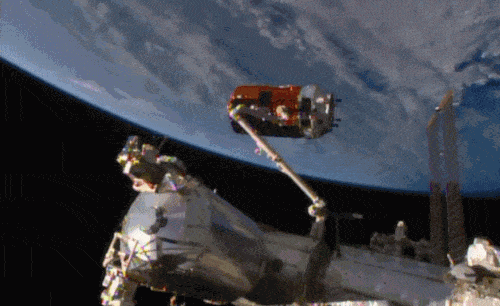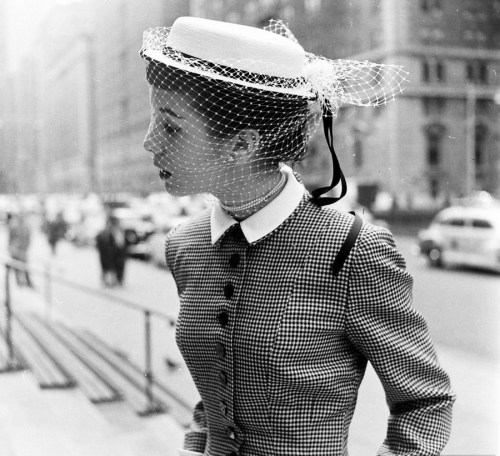I Was Convinced These Were Mountains On Joy Division’s Cover. *you Learn Something New Every Day*

I was convinced these were mountains on Joy Division’s cover. *you learn something new every day*
More Posts from Andromedasbitch-blog and Others

Aboard the International Space Station this morning, Astronaut Kimiya Yui of the Japan Aerospace Exploration Agency (JAXA) successfully captured JAXA’s Kounotori 5 H-II Transfer Vehicle (HTV-5) at 6:28 a.m. EDT.
Yui commanded the station’s robotic arm, Canadarm2, to reach out and grapple the HTV-5, while NASA astronauts Kjell Lindgren provided assistance and Scott Kelly monitored HTV-5 systems. The HTV-5 launched aboard an H-IIB rocket at 7:50 a.m. Wednesday, Aug. 19, from the Tanegashima Space Center in southern Japan. Since then, the spacecraft has performed a series of engine burns to fine-tune its course for arrival at the station.
The HTV-5 is delivering more than 8,000 pounds of equipment, supplies and experiments in a pressurized cargo compartment. The unpressurized compartment will deliver the 1,400-pound CALorimetric Electron Telescope (CALET) investigation, an astrophysics mission that will search for signatures of dark matter and provide the highest energy direct measurements of the cosmic ray electron spectrum.
Below is a breathtaking image shared by Astronaut Scott Kelly of the HTV-5 and Canadarm2, which reached out and grappled the cargo spacecraft.


Here’s something for you to start the week off with a bang. This is a computer simulation of a supernova event, the moments when a massive star collapses in on itself to evolve into a neutron star. The violent and knobbly shock wave from the collapse expands out in a fraction of a second, with the coldest gas in the model colored blue and the hottest colored red. Ejected stellar material moves away from the core at speeds that can reach almost 19,000 miles per second.
The simulation was created in 2012 by the Simulating eXtreme Spacetimes (SXS) Project. Now, direct observations of a supernova called 1987A using NASA’s Nuclear Spectroscopic Telescope Array has confirmed a detail found in the model–that the collapse leads to a lopsided ejection of debris in one direction and the stellar core into another.
Read more from Caltech about how models predicted that perfectly spherical star cores evolve into asymmetric blobs with plumes of broiling hot gasses powered by neutrino emissions.

(Hubble Space Telescope captured supernova 1987A with a bright ring of material ejected from the dying star before it detonated. The ring is being lit up by the explosion’s shock wave.Credit: ESA/Hubble & NASA.)
Keep reading

Traveling across more than seven Midwestern states with a professional storm-chasing group, photographer Eric Meola documents everything from hair-raising tornadoes to serene sunsets in his project ‘Tornado Alley: The Sky Above the Land Below.’ While the deadly force of a storm can wreak havoc upon a community, he hopes his work reminds the safety-conscientious observer that there is another side to these storms. “You are miles away from the nearest town and you are looking at these beautiful, flat horizons with endless wheat fields, long roads and dramatic rolling hills,” Meola tells TIME. “Then in all of the peacefulness comes this angry sky that is almost exploding with energy and light, form and shape. Nature truly is beautiful.” Photograph by Eric Meola. Read more at lightbox.time.com and see a behind the scenes picture @timelightbox. http://ift.tt/1Kvla1j

Fashion photo by Gordon Parks, New York, 1950









As I am working on publishing the book for this series, I finally finished working on the introduction to the our favorite heavenly bodies! It’s character profiles in the form of story telling! Enjoy!
https://solarsystem.nasa.gov/planets/




This is the fourth week of Red, White and Blue Stars Month!
This week’s entry: Types of Stars
http://typeslist.com/different-types-of-stars/

1967 - Teen Dance Party

Gargantua

It’s Red, White and Blue stars month!
This week’s entry: Life of a star Part 2
http://www.schoolsobservatory.org.uk/astro/stars/lifecycle
-
 lastlifeinuniverse liked this · 1 year ago
lastlifeinuniverse liked this · 1 year ago -
 andromedasbitch-blog reblogged this · 9 years ago
andromedasbitch-blog reblogged this · 9 years ago -
 andromedasbitch-blog liked this · 9 years ago
andromedasbitch-blog liked this · 9 years ago -
 ripebananaskins reblogged this · 9 years ago
ripebananaskins reblogged this · 9 years ago -
 ripebananaskins liked this · 9 years ago
ripebananaskins liked this · 9 years ago -
 tthomusic liked this · 10 years ago
tthomusic liked this · 10 years ago -
 svnfl0wrr reblogged this · 10 years ago
svnfl0wrr reblogged this · 10 years ago -
 jadaasucks reblogged this · 10 years ago
jadaasucks reblogged this · 10 years ago -
 jadaasucks liked this · 10 years ago
jadaasucks liked this · 10 years ago -
 excuuuuuuseee-you liked this · 10 years ago
excuuuuuuseee-you liked this · 10 years ago -
 pacheland liked this · 10 years ago
pacheland liked this · 10 years ago -
 sandersweet liked this · 10 years ago
sandersweet liked this · 10 years ago -
 raininginseville reblogged this · 10 years ago
raininginseville reblogged this · 10 years ago -
 nnovae reblogged this · 10 years ago
nnovae reblogged this · 10 years ago -
 pulsarmoreno liked this · 10 years ago
pulsarmoreno liked this · 10 years ago -
 l3ynx reblogged this · 10 years ago
l3ynx reblogged this · 10 years ago -
 mathwzrd reblogged this · 10 years ago
mathwzrd reblogged this · 10 years ago -
 quicksilver1993 liked this · 11 years ago
quicksilver1993 liked this · 11 years ago -
 lovekatz reblogged this · 11 years ago
lovekatz reblogged this · 11 years ago -
 voyeuristiclove reblogged this · 11 years ago
voyeuristiclove reblogged this · 11 years ago -
 dondo-wyndampryce-blog liked this · 11 years ago
dondo-wyndampryce-blog liked this · 11 years ago -
 artofbmc reblogged this · 11 years ago
artofbmc reblogged this · 11 years ago -
 blackoceandreams-blog reblogged this · 11 years ago
blackoceandreams-blog reblogged this · 11 years ago -
 hiddenstash liked this · 11 years ago
hiddenstash liked this · 11 years ago -
 chogsf reblogged this · 11 years ago
chogsf reblogged this · 11 years ago -
 refinedvulnerability liked this · 11 years ago
refinedvulnerability liked this · 11 years ago -
 refinedvulnerability reblogged this · 11 years ago
refinedvulnerability reblogged this · 11 years ago -
 blackholewaltz liked this · 11 years ago
blackholewaltz liked this · 11 years ago -
 myownknight liked this · 11 years ago
myownknight liked this · 11 years ago -
 theonethatweimagined reblogged this · 11 years ago
theonethatweimagined reblogged this · 11 years ago -
 subnode liked this · 11 years ago
subnode liked this · 11 years ago -
 kingsofsleep liked this · 11 years ago
kingsofsleep liked this · 11 years ago -
 maxmelle reblogged this · 11 years ago
maxmelle reblogged this · 11 years ago -
 raininginseville reblogged this · 11 years ago
raininginseville reblogged this · 11 years ago -
 experimentblood reblogged this · 11 years ago
experimentblood reblogged this · 11 years ago -
 badhugs liked this · 12 years ago
badhugs liked this · 12 years ago -
 luxtoss liked this · 12 years ago
luxtoss liked this · 12 years ago